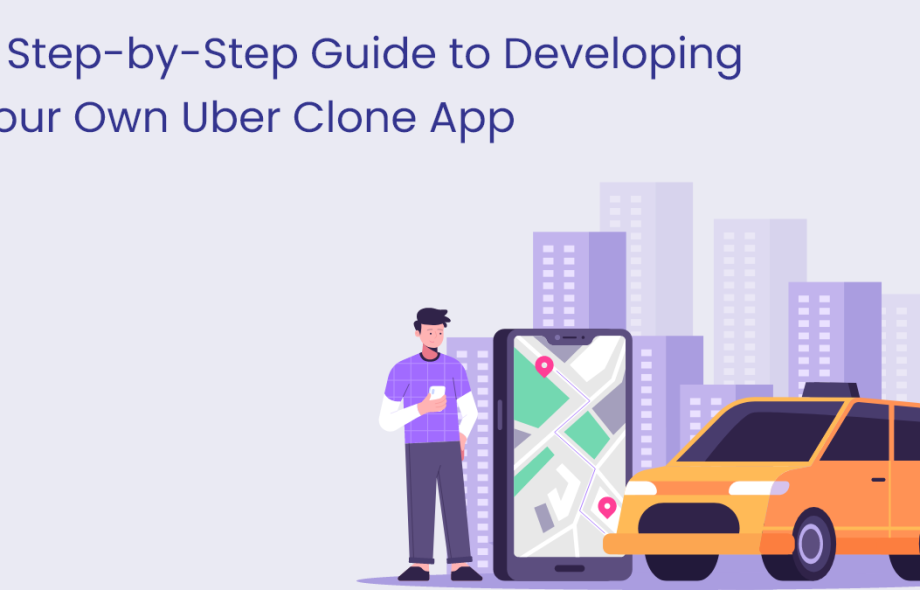Developing a ride-hailing app like Uber from scratch may seem like a daunting task, but with the right guidance and resources, it’s entirely achievable. In this step-by-step tutorial, we’ll walk you through the process of building your own Uber clone app, covering everything from planning and design to development and deployment.
Step 1: Define Your Requirements
Before you start developing your Uber clone app, it’s essential to define your requirements and objectives. Determine the target audience, features you want to include, and the platforms (iOS, Android, web) you’ll be targeting. Conduct market research to understand user needs and preferences.
Step 2: Design the User Interface
Next, design the user interface (UI) for your app. Sketch out wireframes and create mockups to visualize the layout and flow of the app. Focus on creating a clean and intuitive interface that provides a seamless user experience for both passengers and drivers.
Step 3: Choose the Right Technology Stack
Selecting the right technology stack is crucial for building a robust and scalable Uber clone app. Consider factors such as programming languages, frameworks, libraries, and databases. For example, you might use React Native for cross-platform development, Node.js for the backend, and MongoDB for the database.
Step 4: Develop the Backend
Start by developing the backend infrastructure for your app. This includes setting up servers, databases, APIs, and authentication mechanisms. Implement features such as user authentication, ride matching algorithms, payment processing, and geolocation tracking.
Step 5: Build the Frontend
Once the backend is in place, focus on building the frontend of your app. Develop separate interfaces for passengers and drivers, each tailored to their specific needs. Implement features such as user registration, ride booking, real-time tracking, in-app messaging, and payment integration.
Step 6: Implement Core Features
With the frontend and backend components in place, it’s time to implement the core features of your Uber clone app. This includes features such as:
- User Registration and Authentication
- Ride Booking and Scheduling
- Real-Time Location Tracking
- Driver Dispatch and Routing
- In-App Messaging and Notifications
- Payment Processing and Billing
- Rating and Review System
Step 7: Test and Debug
Before launching your Uber clone app, thoroughly test and debug all components to ensure they function as intended. Conduct both manual and automated testing to identify and fix any bugs, errors, or performance issues. Test the app on various devices and operating systems to ensure compatibility.
Step 8: Deploy and Launch
Once testing is complete, deploy your Uber clone app to the respective app stores (Google Play Store, Apple App Store) or web hosting platforms. Follow the guidelines provided by the app stores for submitting and publishing your app. Consider launching with a soft launch to gather feedback and make any necessary improvements.
Step 9: Monitor and Maintain
After launching your Uber clone app, monitor its performance and user feedback closely. Collect analytics data to track user engagement, retention, and revenue metrics. Continuously update and improve your app based on user feedback and market trends to stay competitive in the ride-hailing industry.
Step 10: Scale and Expand
As your Uber clone app gains traction and grows in popularity, consider scaling and expanding your business. Explore opportunities to enter new markets, add new features, and partner with other companies to offer additional services. Continuously innovate and adapt to meet the evolving needs of your users.
Conclusion
Building an Uber clone app from scratch is a challenging but rewarding endeavor. By following this step-by-step tutorial and leveraging the right tools and technologies, you can develop a successful ride-hailing app that provides value to both passengers and drivers. Stay focused, iterate on your ideas, and don’t be afraid to seek help or guidance along the way. With dedication and perseverance, you can turn your Uber clone app into a thriving business in the competitive ride-hailing market.
 :
https://gojekcloneapp.com/uber-clone-app/
:
https://gojekcloneapp.com/uber-clone-app/

